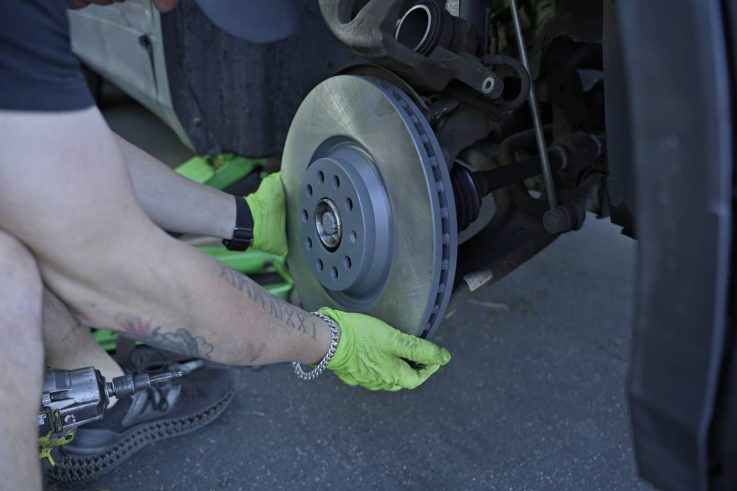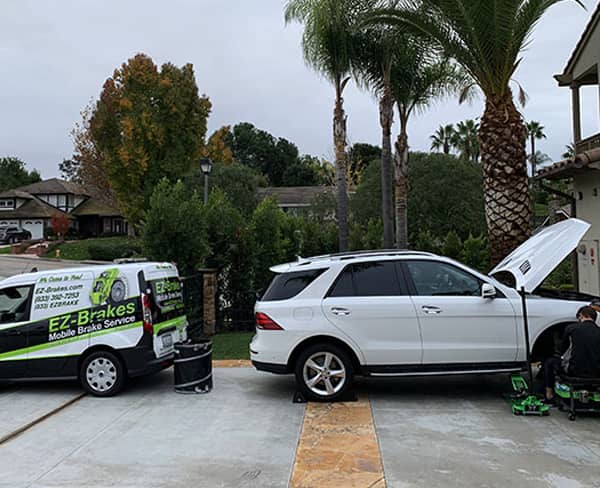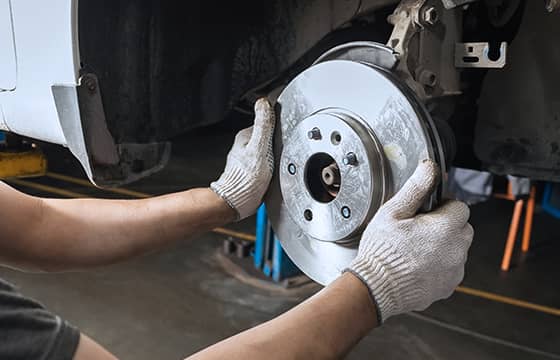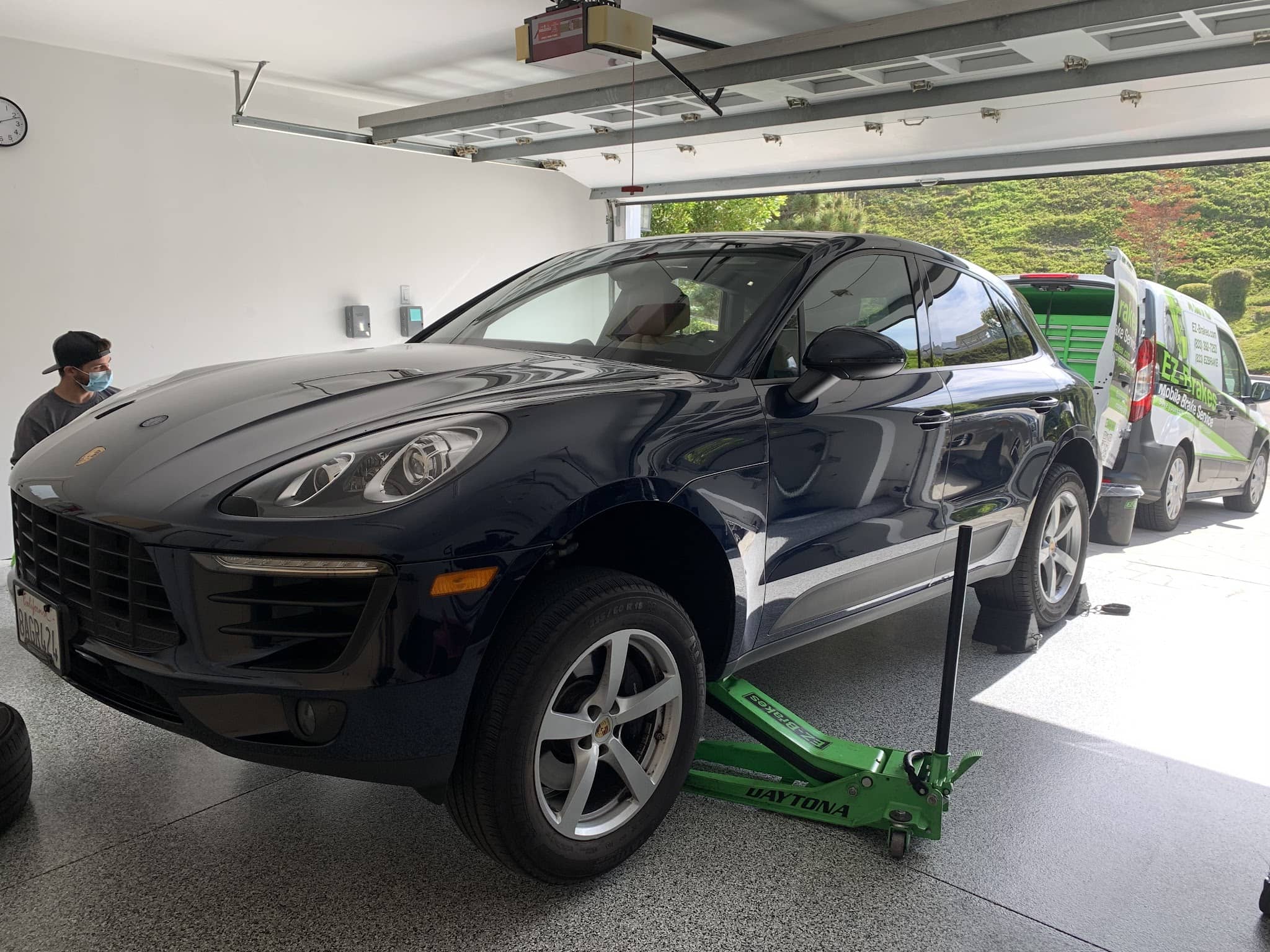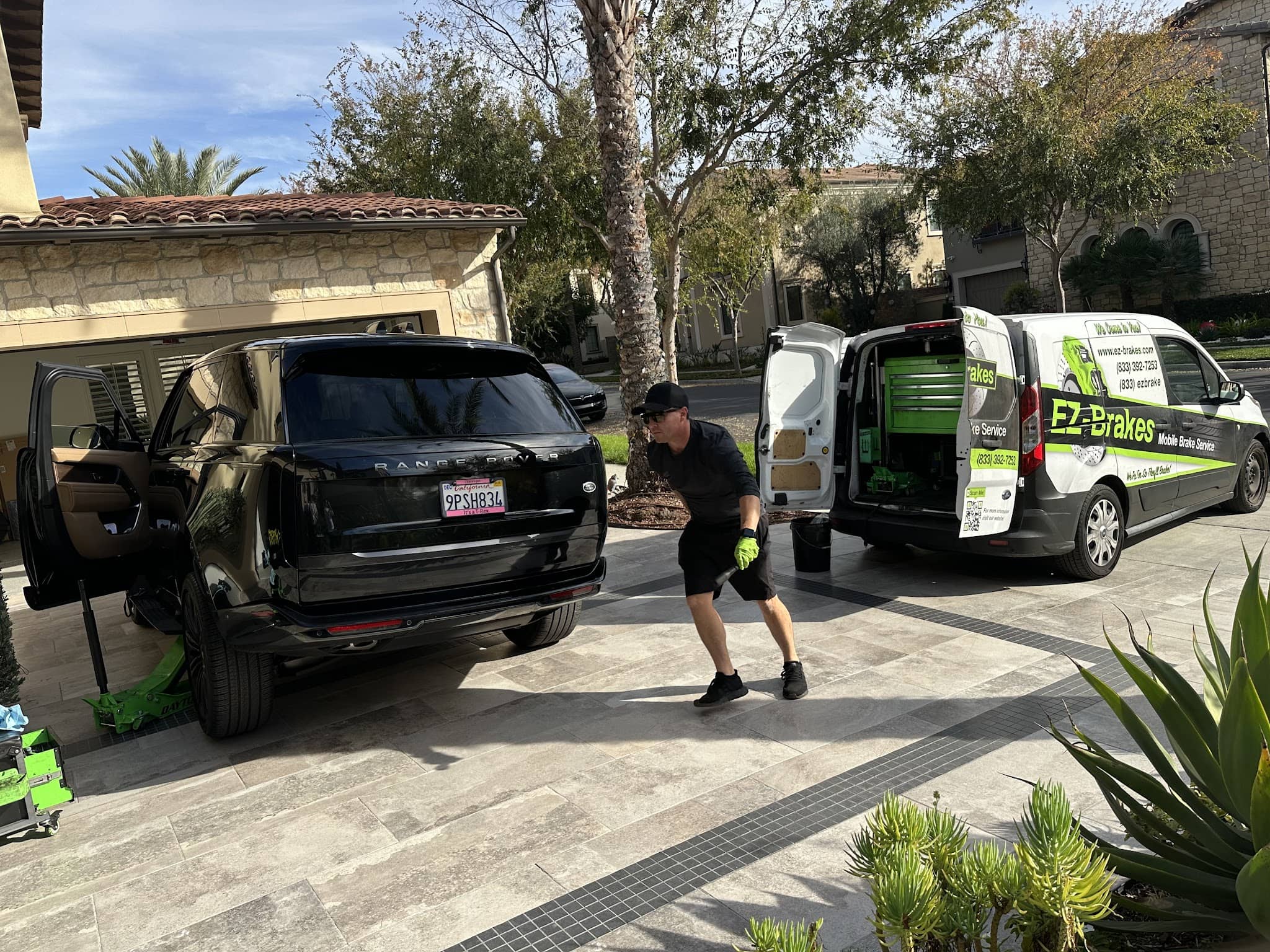Brake rotors are crucial components in any vehicle’s braking system, directly affecting safety and performance. Knowing how long brake rotors last, how to identify signs of wear, and the best way to maintain them is essential to ensuring your car operates smoothly. In this guide, we’ll discuss the lifespan of rotors, how to care for your rotor surfaces, and much more, so you can keep your vehicle in peak condition.
What Are Brake Rotors and Why Do They Matter?
Before we dive into how long brake rotors last, it’s essential to understand what they are and why they’re so important. Brake rotors are metal discs located behind each wheel, and they are a critical part of your vehicle’s braking system. When you press the brake pedal, brake pads apply pressure to the rotor surfaces, creating friction that slows or stops the car.
The durability of your brake rotors directly impacts your vehicle’s braking performance. Over time, rotors can wear out due to friction, heat, and external elements like rust. Understanding how to care for these brake components will help you extend their lifespan and maintain safety on the road.
How Long Do Brake Rotors Typically Last?
Average Lifespan of Brake Rotors
On average, brake rotors last between 30,000 and 70,000 km (or approximately 18,640 to 43,500 miles). However, this lifespan can vary based on several factors, including the quality of the rotors, driving conditions, and driving habits.
For example, performance rotors designed for high-end vehicles may last longer due to superior materials, while standard rotors on everyday vehicles may wear out quicker under certain conditions. Here are the primary factors that affect rotor longevity:
- Driving Style: Aggressive driving, such as hard braking or frequent speeding, can reduce the lifespan of the rotors.
- Driving Conditions: Constantly driving in stop-and-go traffic or hilly terrain can contribute to faster rotor wear.
- Rotor Material: Premium rotors made from high-quality materials tend to last longer than basic, lower-cost options.
Read more: Brake Rotor Resurfacing
Signs of Wear on Brake Rotors
It’s important to monitor the condition of your brake rotors, as they may show signs of wear even before they reach the end of their expected lifespan. Here are some of the most common signs of wear:
• Vibrations or Shaking When Braking: If you feel vibrations or shaking when applying the brakes, it might indicate that the rotor surfaces are warped.
• Grinding or Squealing Noises: These sounds may occur when the rotor has become too thin or the brake pads are worn down and rubbing against the rotor surfaces.
• Decreased Braking Performance: If you notice a longer stopping distance or reduced braking power, it’s a sign that the rotors are losing their effectiveness.
• Visible Damage: Inspect the rotor surfaces for cracks, grooves, or rust buildup, which may indicate significant wear.
Factors That Affect the Lifespan of Brake Rotors
Driving Habits and Conditions
The best way to ensure that your rotors last longer is to drive smoothly and avoid sudden, aggressive braking. Frequent hard stops can generate excess heat, leading to warped rotors. Additionally, driving in areas with heavy traffic or hilly terrain increases the strain on your brakes, which can cause premature wear.
Quality and Material of Brake Rotors
The quality of the brake components also plays a significant role in how long rotors last. Higher-end rotors are typically made from stronger materials, such as carbon composite or ceramic, which can withstand heat and wear better than basic cast-iron rotors. If you invest in premium rotors, they may last longer and offer better braking performance.
Rust and Environmental Factors
Rust can form on rotor surfaces, especially if you live in an area with high humidity or frequently drive in rainy conditions. Rust can degrade the rotor surface, leading to pitting, cracking, and reduced braking efficiency. Regular cleaning and maintenance can help minimize rust buildup, especially in regions with harsh weather conditions.
How to Extend the Lifespan of Brake Rotors
Avoid Aggressive Braking
The best way to reduce wear on your brake rotors is to avoid aggressive braking. Instead of slamming on the brakes, try to brake gently and allow the vehicle to slow down naturally. This will help prevent excess heat buildup and keep the rotor surfaces in better condition.
Maintain Healthy Brake Pads
Brake pads and rotors work in tandem, so keeping your brake pads in good shape is essential for rotor longevity. Worn-out brake pads can cause uneven pressure on the rotor surfaces, leading to premature wear. Regularly check your brake pads and replace them when they become too thin.
Regular Brake Inspections
Having your brake system checked by a professional mechanic at least once a year is an excellent way to spot issues early. During a brake inspection, a mechanic will check the thickness of the rotors, inspect the brake pads, and ensure all brake components are in good condition.
The Role of Brake Fluid in Rotor Health
Brake fluid plays a crucial role in maintaining your vehicle’s braking system, including the health of your brake rotors. It transmits force from the brake pedal to the braking components, allowing the vehicle to stop. The quality of brake fluid directly impacts rotor longevity and braking efficiency.
How Brake Fluid Quality Affects Rotor Longevity
When brake fluid degrades due to moisture absorption or heat, it loses its effectiveness. This can cause excessive heat buildup in the braking system, leading to warped or cracked rotor surfaces. Regular brake fluid maintenance helps prevent this, ensuring smooth braking and protecting the rotors from premature wear.
Signs of Contaminated Brake Fluid and Its Impact on Rotors
Contaminated brake fluid can cause issues like a spongy brake pedal and decreased braking power. Moisture in the fluid lowers the boiling point, leading to uneven braking and increased wear on the rotors. It can also cause rust and corrosion on the rotors, creating grooves or pits that reduce braking efficiency. Regularly changing brake fluid prevents these issues, protecting your rotors and ensuring safe braking.
How EZ-Brakes Helps Maintain Brake Rotors
At EZ-Brakes, we specialize in brake services that keep your rotors and brake components in top shape. From brake inspections to rotor replacement, our experienced technicians ensure that your vehicle’s braking system remains safe and efficient.
If you notice any signs of wear or unusual noises, bring your vehicle to us for a thorough inspection. We use high-quality rotors and offer expert advice to help you maximize the lifespan of your brake components.
How to Inspect Brake Rotors at Home
Inspecting your brake rotors at home is essential for ensuring the safety and performance of your vehicle. Regularly checking rotor thickness and identifying signs of wear can help you avoid costly repairs and keep your braking system in optimal condition. Below is a simple guide to help you inspect your brake rotors for damage.
Step-by-Step Guide to Checking Rotor Thickness
- Lift the Vehicle: Start by lifting your vehicle using a jack and securing it with jack stands. This is crucial for your safety before removing the wheels.
- Remove the Wheel: Use a lug wrench to remove the wheel covering the rotor, giving you direct access to the brake components.
- Measure Rotor Thickness: Use a caliper to measure the thickness of the rotor. Refer to your vehicle’s manual for the minimum thickness specification. If the rotor is thinner than this specified limit, it’s time to replace it.
- Check for Evenness: Ensure the thickness is consistent across the rotor’s surface. Significant variations could indicate uneven wear or damage, which may require replacement.
How to Spot Cracks or Warping on Rotor Surfaces
- Visual Inspection: Look for cracks, grooves, or excessive rust on the rotor surface. Cracks indicate a need for immediate replacement, as they compromise the rotor’s integrity.
- Feel for Warping: Run your hand over the rotor surface. If you feel uneven spots, the rotor may be warped. Warped rotors can cause vibrations while braking and should be replaced to maintain safe braking performance.
FAQ About How Long Do Brake Rotors Last?
HOW CAN I TELL IF MY BRAKE ROTORS ARE WORN OUT?
Common signs of wear include vibrations when braking, unusual grinding noises, a longer stopping distance, and visible damage to the rotor surfaces, such as cracks or grooves.
HOW LONG DO BRAKE ROTORS LAST IN KM?
On average, brake rotors last between 30,000 to 70,000 km (18,640 to 43,500 miles), but this depends on factors like driving habits, driving conditions, and rotor material.
CAN RUST DAMAGE MY BRAKE ROTORS?
Yes, rust can form on the rotor surfaces, especially in wet conditions, and it can lead to pitting, cracking, and decreased braking efficiency. Regular maintenance can help prevent rust buildup.
WHAT IS THE BEST WAY TO EXTEND THE LIFE OF MY BRAKE ROTORS?
The best way to extend rotor life is to drive smoothly, avoid hard braking, maintain healthy brake pads, and have your brake system inspected regularly to catch issues early.
Conclusion on How Long Do Brake Rotors Last?
Understanding how long brake rotors last, how to spot signs of wear, and how to maintain your brake components can help ensure your vehicle remains safe on the road. By monitoring your rotors’ condition, avoiding aggressive braking, and performing regular maintenance, you can extend their lifespan and improve overall braking performance.
At EZ-Brakes, we offer expert brake services to keep your brake rotors in optimal condition. Whether you need a routine inspection or a rotor replacement, our team is here to ensure your vehicle is always ready for the road.
